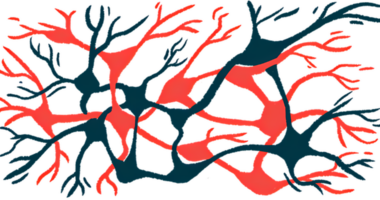Ultrasound device used in mice may be DBS tool for Parkinson’s disease
Implantable ImPULS was shown to activate dopamine-making nerve cells

Researchers have developed an implantable device, dubbed ImPULS, that can stimulate brain cells using high-frequency sound waves, or ultrasound, in mice.
The researchers said they hope the device may be useful for deep brain stimulation in people with disorders such as Parkinson’s disease and as a research tool to better understand the disorders. The device’s development was detailed in Nature Communications in “An implantable piezoelectric ultrasound stimulator (ImPULS) for deep brain activation.”
“Brain stimulation has been one of the most effective, yet least understood, methods used to restore health to the brain. ImPULS gives us the ability to stimulate brain cells with exquisite spatial-temporal resolution and in a manner that doesn’t produce the kind of damage or inflammation as other methods,” Steve Ramirez, an assistant professor at Boston University and co-author of the study, said in a news release.
In Parkinson’s disease, the dysfunction and death of nerve cells in the brain responsible for making the chemical messenger dopamine results in normal brain signaling mechanisms being disrupted, giving rise to Parkinson’s symptoms.
Deep brain stimulation, or DBS, is an established intervention that’s used to help control symptoms of Parkinson’s. It involves inserting a a small device called an electrode into the brain that can provide electrical stimulation to nerve cells. By stimulating cells, DBS helps normalize brain signaling, thereby easing disease symptoms.
Ultrasound over electricity
A major drawback of implanted electrodes is that they are vulnerable to corrosion, which in the long term can make them less effective or not to function. Also, scar tissue forming around the implant can interfere with the electrical impulses.
To get around this, researchers designed an implantable device that uses ultrasound rather than electricity to stimulate neurons. The device is a thin fiber that vibrates to produce ultrasound at a specific frequency that can activate nearby nerve cells.
“By using ultrasonography, we can create a new way of stimulating neurons to fire in the deep brain,” said Canan Dagdeviren, PhD, associate professor at the Massachusetts Institute of Technology and senior author of the study.
Since the device’s electronics aren’t in contact with brain tissue, the device is resistant to the type of corrosion that can affect traditional electrodes.
“This device is thinner than a hair fiber, so there will be negligible tissue damage, and it is easy for us to navigate this device in the deep brain,” Dagdeviren said, adding, “we carefully customize the device so that it will be minimally invasive and avoid major blood vessels in the deep brain.”
After designing the device and running proof-of-concept tests in the lab, the scientists tested it in mice. The researchers showed it was able to activate dopamine-making nerve cells in the brain, supporting its possible use in Parkinson’s. The ultrasound stimulation was highly specific as the device activated the nerves next to it.
More work is needed to perfect the technology and expand its applications, said the researchers, who noted the data so far “presents the ImPULS as a potent neuromodulatory tool.”
“We cannot say that the device will give the same effect on every region in the brain, but we can easily and very confidently say that the technology is scalable, and not only for mice. We can also make it bigger for eventual use in humans,” Dagdeviren said.
“We believe this implanted ultrasound stimulation device can be developed into a versatile tool for both basic systems neuroscience research and potential therapeutic applications,” the researchers said.







